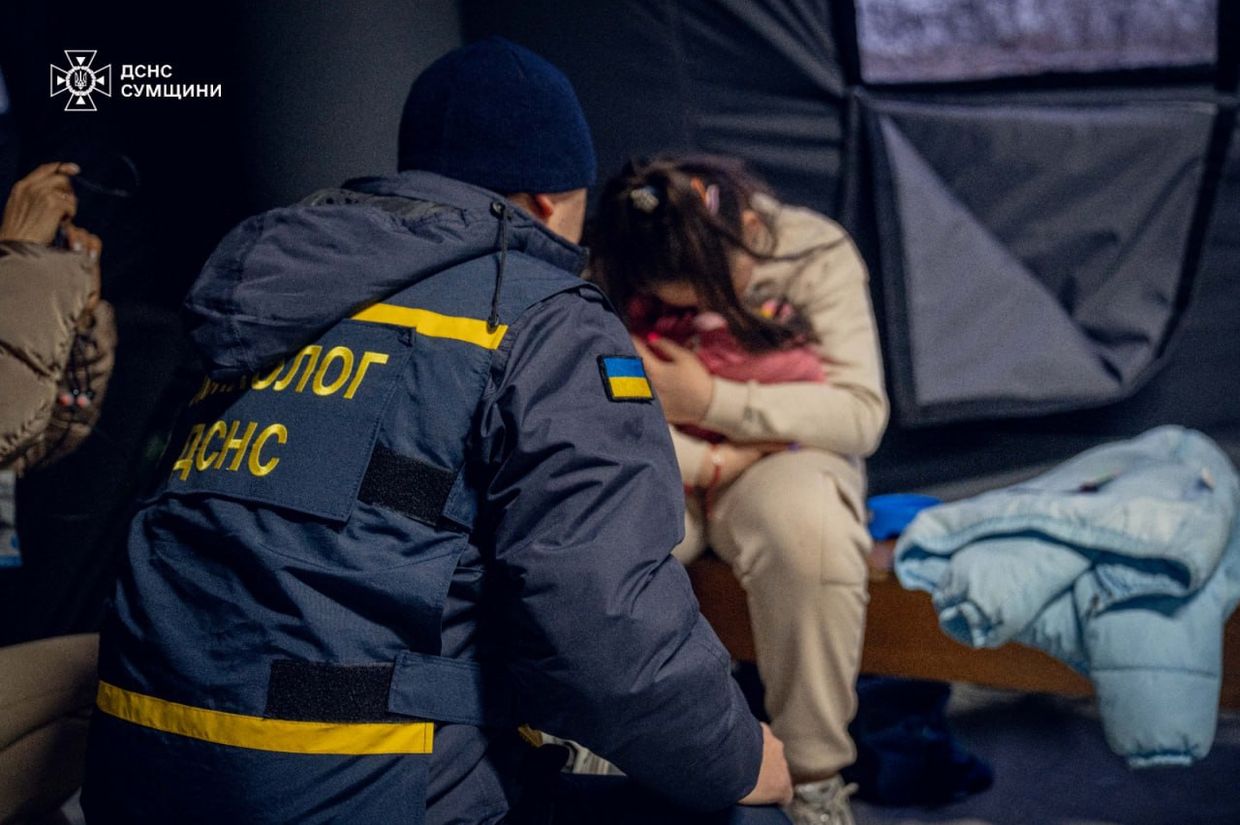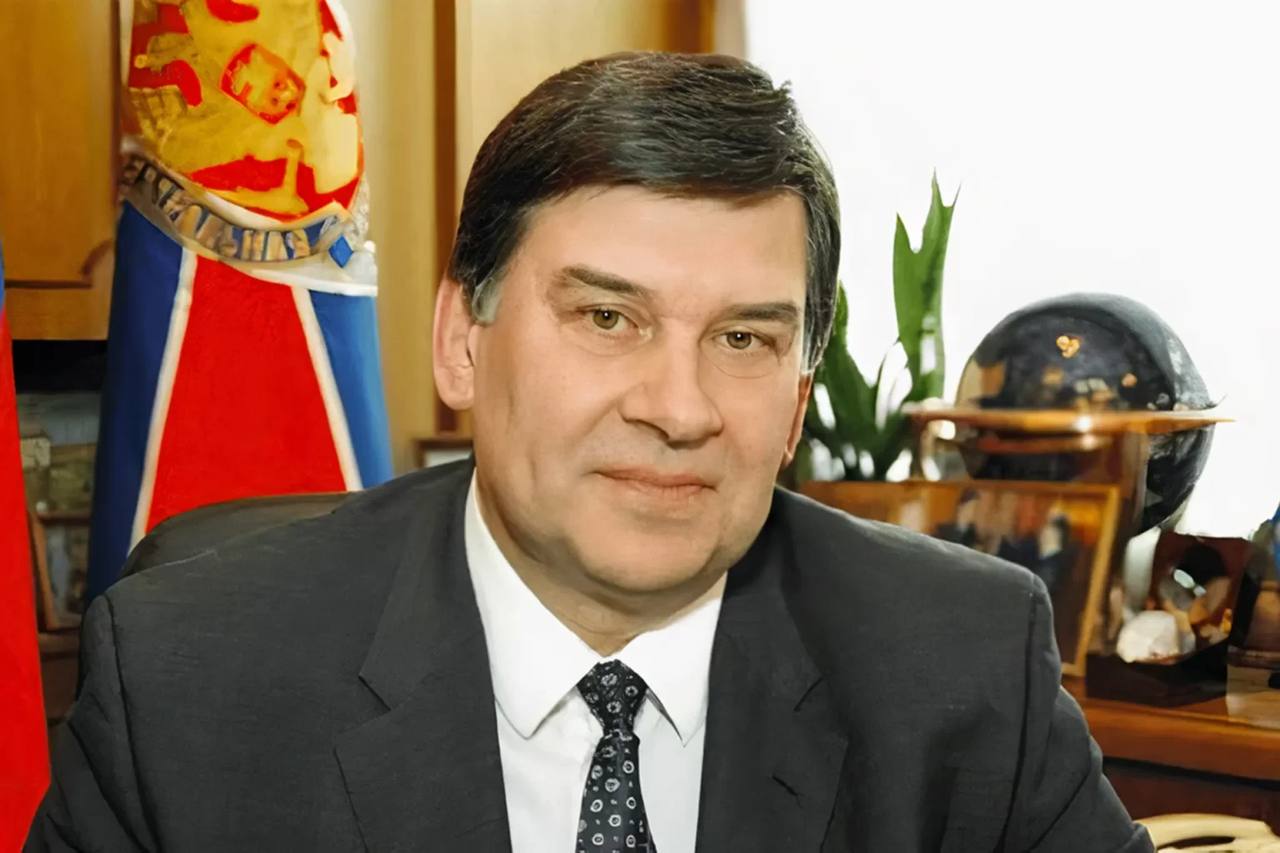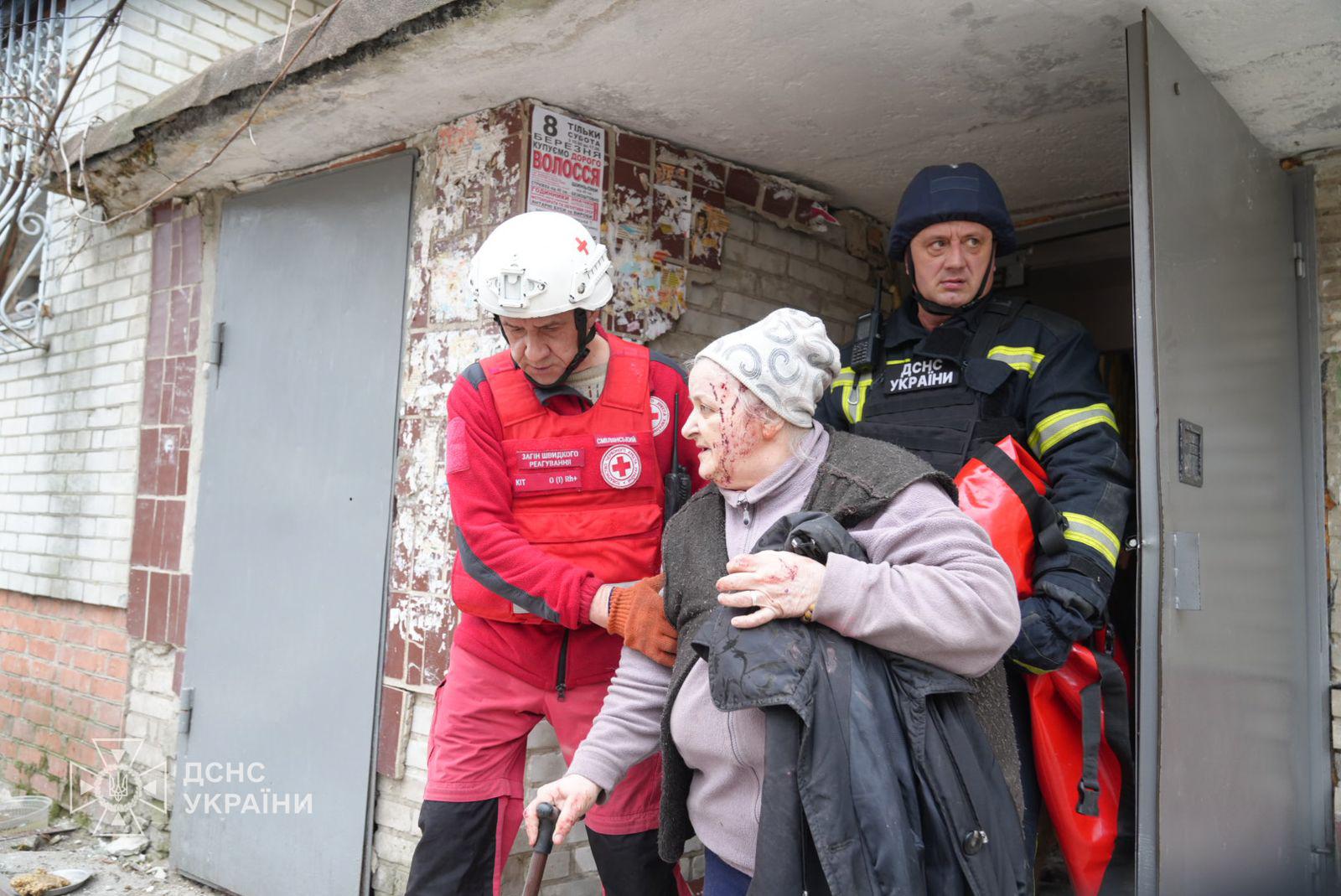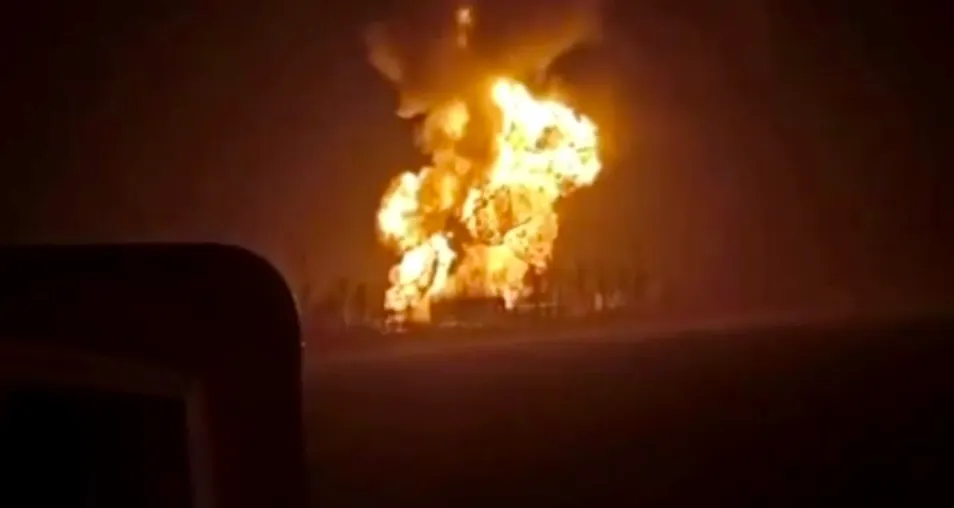As Riyadh Negotiations Stretch for 12 Hours, Moscow Continues Bombardment While Ukrainian Forces Make Limited Gains in Belgorod and Kharkiv
Summary of the Day – March 24, 2025
The diplomatic dance in Saudi Arabia unfolded against a backdrop of continued violence as US and Russian delegations concluded 12 hours of talks on March 24, focusing primarily on Black Sea security and a potential moratorium on energy infrastructure strikes. Meanwhile, on the ground, a Russian missile strike wounded 94 civilians, including 23 children, in the northeastern city of Sumy. Ukrainian forces have made modest but significant advances into Russia’s Belgorod Oblast, seizing the village of Demidovka, while also reclaiming territory near Dvorichna in Kharkiv Oblast. The Kremlin continues to push maximalist territorial demands while simultaneously undercutting negotiations through its actions on the battlefield. President Donald Trump signaled that territorial divisions are actively being negotiated, remarking that discussions are underway regarding “lines of demarcation” and even power plant ownership. Amid this complex landscape, European leaders prepare for a crucial meeting in Paris on March 27 that may determine the future security architecture for Ukraine.
 The aftermath of a Russian missile attack against Sumy, Ukraine Beseda. (Ukraine’s State Emergency Service/Telegram)
The aftermath of a Russian missile attack against Sumy, Ukraine Beseda. (Ukraine’s State Emergency Service/Telegram)
Riyadh Marathon: US and Russia Conclude 12-Hour Negotiations on Ceasefire Terms
US and Russian delegations met for a marathon 12-hour session in Riyadh, Saudi Arabia on March 24, following US-Ukrainian talks the previous day. The discussions, held behind closed doors at the Ritz-Carlton hotel, took place with three breaks and focused primarily on the Black Sea Initiative and parameters for a potential temporary ceasefire.
“The matter of the Black Sea Initiative and everything related to the initiative’s renewal are on the agenda today,” Kremlin spokesperson Dmitry Peskov confirmed, referring to the grain export deal that Moscow unilaterally abandoned in 2023.
The US delegation was led by Andrew Peek, a senior director at the National Security Council, and Michael Anton, a senior State Department official. Russia sent Grigory Karasin, chairman of the Federation Council Committee on International Affairs, and Sergei Beseda, an advisor to Federal Security Service Director Alexander Bortnikov.
 Sergey Beseda, former head of the 5th Service of Russia’s FSB, represented Russia in talks with the U.S. in Saudi Arabia. (Telegram)
Sergey Beseda, former head of the 5th Service of Russia’s FSB, represented Russia in talks with the U.S. in Saudi Arabia. (Telegram)
While the content of the discussions remains largely confidential, sources indicated the talks centered on three key areas: a moratorium on strikes against energy facilities and civilian infrastructure, naval security in the Black Sea, and framework parameters for continuing dialogue. TASS reported that the US and Russian delegations will release a joint statement on March 25.
Russian Foreign Ministry spokesperson Maria Zakharova downplayed expectations, stating the negotiations “should not be expected to produce a breakthrough” and that work is ongoing in “several directions.” Karasin later described the talks as proceeding in a “creative way,” saying the sides “understand each other’s views.”
Demidovka Breakthrough: Ukrainian Forces Hold Russian Territory for Fourth Day
Ukrainian tank and armored infantry units have successfully held a modest but strategic portion of Russian territory in western Belgorod Oblast for more than 96 hours, advancing into the village of Demidovka approximately 5 kilometers (3 miles) inside Russia.
Geolocated footage published on March 24 confirms that Ukrainian forces have gained control of central Demidovka. While Russian milbloggers acknowledged the Ukrainian advance into southern parts of the settlement, they denied that Ukrainian forces have seized the entire village.
Pro-Moscow milblogger Gennadiy Alekhin wrote that the Ukrainian advance had turned the international frontier opposite Demidovka “into a giant gray zone” with house-to-house fighting in progress inside the village itself. Contradicting this account, Russian milblogger Boris Rozhin claimed, “The settlement is under Ukrainian control. Russian forces withdrew from the area, allowing the enemy to occupy it.”
Ukrainian forces began limited attacks into northwestern Belgorod Oblast on March 18 and have made marginal advances toward Grafovka (southeast of Demidovka) and Prilesye (south of Demidovka) over the last six days. Russian sources reported that Ukraine is using small infantry groups supported by all-terrain vehicles and some armored vehicles in these operations.
The Ukrainian military appears to be leveraging long-range strikes to disrupt Russian logistics and command and control in the area. Ukrainian forces recently conducted two strikes on Russian command posts in western Belgorod Oblast, destroying communications equipment, and the Ukrainian Special Operations Forces reported downing four Russian helicopters over the region.
Sumy Under Fire: Russian Missile Strike Wounds 94 Civilians, Including 23 Children
A Russian missile strike hit the northeastern city of Sumy on March 24, wounding 94 civilians, including 23 children, even as diplomatic talks were underway in Saudi Arabia. The attack targeted residential areas and infrastructure facilities, including a children’s hospital, according to acting Mayor Artem Kobzar.
 Emergency responders and volunteers work in the area following the Russian missile attack in Sumy, Ukraine that injured over 90 people. (State Emergency Service of Ukraine)
Emergency responders and volunteers work in the area following the Russian missile attack in Sumy, Ukraine that injured over 90 people. (State Emergency Service of Ukraine)
“Each day like this, every night under Russian missiles and drones, every single day of this war brings loss, pain, and destruction that Ukraine never wanted,” President Volodymyr Zelensky said in his evening address. “The war was brought from Russia, and it is to Russia that the war must be pushed back. They must be the ones forced into peace.”
The strike damaged at least 30 high-rise buildings, 15 private residences, and numerous warehouses, offices, and medical facilities. Search and rescue operations continued until at least 10 p.m. local time before being paused for the night.
Located under 30 kilometers from the Russian border, the city of Sumy has been continuously targeted since the launch of Russia’s full-scale invasion in 2022. President Zelensky had warned in mid-March that Russian troops were gathering at the border, indicating plans to strike Sumy Oblast.
Trump Territory Talk: US President Confirms Land Negotiations Underway
US President Donald Trump said on March 24 that talks in Riyadh include discussions on territories, demarcation lines, and ownership of Ukraine’s power plants, confirming that territorial concessions are actively being negotiated.
“We’re talking about territory right now. We’re talking about lines of demarcation, talking about power, power plant ownership. Some people are saying the United States should own the power plant… because we have the expertise,” Trump said during a press briefing.
While Trump did not specify which power plant he was referring to, President Zelensky previously discussed with Trump the possibility of US assistance in restoring the Zaporizhzhia Nuclear Power Plant, Europe’s largest nuclear facility, which remains under Russian occupation.
Trump also revealed that a US-Ukraine agreement on critical minerals, which was derailed after a heated clash between Trump and Zelensky on February 28, is expected to be signed “soon.” The agreement would establish a fund to which Ukraine would contribute 50% of proceeds from future profits of state-owned resources, including oil, gas, and logistics infrastructure.
Meanwhile, reports indicate that Russia is deliberately prolonging peace talks to seize more territory and strengthen its negotiating position. The Moscow Times quoted a Russian diplomatic source saying that time is now playing in Russia’s favor, and the Kremlin wants to “make the most of it.”
Russia’s Territorial Ambitions: Moscow Pushes for Full Control of Occupied Regions
Russia is pushing to gain full control over four occupied Ukrainian oblasts—Donetsk, Luhansk, Zaporizhzhia, and Kherson—during negotiations with the United States, despite not fully controlling any of these regions militarily, according to sources familiar with the Kremlin’s strategy.
A Kremlin-linked official told the Moscow Times that Russian President Vladimir Putin “cannot afford to lose these territories politically” and that Russia intends to solidify its grip on them at any cost. “The Constitution has no mechanism for regions to leave Russia. We need all of Zaporizhzhia and all of Kherson,” the official reportedly said.
As an alternative strategy, Russia may attempt to seize additional Ukrainian territory, such as parts of Dnipropetrovsk or Sumy oblasts, and then offer an exchange for Kherson and Zaporizhzhia. “We hope to find a way that avoids storming Kherson or forcing a crossing of the Dnipro River. That would mean thousands of casualties for us,” another Russian official admitted.
These maximalist territorial demands come as Ukrainian forces continue to defend against Russian offensives in the eastern part of the country while conducting limited operations on Russian soil. Russian milbloggers reported that Moscow has redeployed border guards, Chechen Akhmat forces, elements of the Russian Northern Grouping of Forces, and elements of the 155th Naval Infantry Brigade to northwestern Belgorod Oblast to counter Ukrainian operations there.
Dvorichna Defense: Ukraine Reclaims Territory in Strategic Kharkiv Sector
Ukrainian forces have reclaimed part of the territory near the village of Dvorichna in Kharkiv Oblast, according to Oles Maliarevych, deputy commander of the Achilles unmanned systems regiment.
“Speaking of Dvorichna, you can see on DeepState (a crowd-sourced monitoring website) that there are blue zones where part of the territory has been liberated. These were very important but small operations,” Maliarevych said.
Dvorichna, located on the western bank of the Oskil River, lies 17 kilometers (10 miles) north of Kupiansk. Russian forces have been trying to establish a foothold on this bank for months, seeking to outflank Ukrainian defenses and pressure the strategically significant city.
“Russia is currently working with infantry units. Pontoon crossings are not new, but they are trying to do it,” Maliarevych explained. “We find them when they approach the river (Oskil), but it is not always possible. But we destroy them on the crossing, we destroy them on the approaches, and we destroy them on the left (eastern) bank of the Oskil River.”
According to Maliarevych, Russian forces have suffered “quite serious losses” on the western bank of the Oskil River. He acknowledged that some Russian troops who managed to cross had entrenched themselves in makeshift defenses, noting, “They dug holes, occupied houses, dugouts, and basements.”
Energy Infrastructure at Risk: Russian Strike Shuts Down Critical Oil Facility
The Kavkazskaya oil pumping station in Russia’s Krasnodar Krai is no longer suitable for oil transportation due to damage from a Ukrainian drone attack, the Caspian Pipeline Consortium announced. Firefighters continue battling a blaze at the oil depot for the fifth day after the strike, with the fire having spread to 2,000 square meters (21,500 square feet).
Ukrainian drones struck the facility overnight on March 19, damaging infrastructure and igniting a fire that has proven difficult to extinguish. Prior to this attack, Ukrainian forces also hit the Kropotkinskaya oil pumping station on February 17, the largest in Russia’s Caspian Pipeline Consortium.
“Following the shutdown of the Kropotkinskaya station, the volume of annual anticipated transportation was reduced, and following the destruction of the Kavkazskaya station, it will not be possible in the foreseeable future,” the consortium’s statement read.
 Screenshot from a video allegedly showing fire on Russia’s Kavkazskaya oil pumping station overnight. (Screenshot / ASTRA).
Screenshot from a video allegedly showing fire on Russia’s Kavkazskaya oil pumping station overnight. (Screenshot / ASTRA).
The facilities are part of the Caspian Pipeline Consortium system, which pumps up to 6 million metric tons of oil annually. These strikes occurred shortly after Putin claimed to have ordered a pause on attacks against Ukrainian energy infrastructure following a phone call with Trump.
European Coalition Preparations: Scholz to Join Paris Summit on Ukraine
German Chancellor Olaf Scholz will participate in the “Coalition of the Willing” meeting in Paris on March 27, where concrete decisions on supporting Ukraine may be reached. Government spokesperson Steffen Hebestreit confirmed that the chancellor will attend the summit of Ukraine’s supporters, which is expected to focus on specific agreements that participants will aim to finalize.
Hebestreit said that the German delegation would continue close cooperation with European partners and allies on supporting Ukraine, potential peace negotiations, and broader European security issues. Discussions will also cover the recent negotiations in Saudi Arabia involving the United States, Russia, and Ukraine.
The gathering is part of an ongoing series of discussions on Ukraine’s future, with previous meetings held in Paris, London, and Brussels. President Zelensky earlier announced his visit to France later this week for these critical talks.
Despite criticism from some corners, including US special envoy Steve Witkoff, who called Starmer’s plan for a coalition force “simplistic” and a “posture and a pose,” European leaders are pressing ahead with preparations for a peacekeeping mission.
Drone Coalition Support: Partner Countries Allocate €20 Million for Ukrainian UAVs
The partner countries of the Drone Coalition have allocated 20 million euros ($21.6 million) from a common fund to procure tactical-level reconnaissance drones for Ukraine, the Defense Ministry announced. The drones are expected to be delivered within three months.
“We are grateful to our partners for responding to this critical need. Prompt response and flexibility in making this decision are important, especially now when the Defense Forces need them most,” said Deputy Defense Minister for Digitalization Kateryna Chernohorenko.
The allied initiative, co-led by the UK and Latvia, was launched in January 2024 to strengthen Ukraine’s unmanned aerial vehicle capabilities, a key factor in modern warfare. By late 2024, nearly 20 countries had joined the coalition.
Kyiv has increasingly relied on long-range drones to strike deep into Russian territory, targeting military infrastructure, airfields, oil refineries, and logistical hubs. President Zelensky has ordered the production of at least 30,000 long-range drones in 2025, while Ukraine continues to develop missile-drone hybrids such as the Palianytsia and Peklo models.
Russian Media Casualties: Three State Journalists Killed in Occupied Luhansk
Three employees from Russian state-affiliated media were killed in occupied Luhansk Oblast while on assignment, according to multiple news outlets. The victims included Izvestia correspondent Alexander Fedorchak, Zvezda TV cameraman Andrei Panov, and driver Alexander Sirkeli.
Izvestia announced that Fedorchak died while reporting from the front lines, noting that “his last report was broadcast literally the day before.” In January, the newspaper reported that a Ukrainian drone attack killed one of its freelance reporters, Alexander Martemyanov, while he was traveling on a highway in occupied eastern Ukraine.
Originally a Soviet state newspaper, Izvestia is now owned by the National Media Group, a media conglomerate with significant state-controlled ownership and close ties to the Kremlin. Meanwhile, Zvezda is a channel linked to Russia’s Defense Ministry.
Russia’s Investigative Committee launched an investigation into the incident, saying that the journalists were killed in Russian-occupied Luhansk Oblast. Leonid Pasechnik, Moscow-installed leader in Luhansk, claimed the attack occurred in the Kreminna district, also killing three civilians.
Religious Persecution: Russia Targets Christian Communities in Occupied Kherson
Russia continues to persecute religious minorities, especially Evangelical Christian communities in occupied Kherson Oblast, as part of a wider campaign aimed at destroying independent Ukrainian national and religious identities.
The Ukrainian Resistance Center reported that Russian occupation officials are forcibly converting and reconsecrating Ukrainian churches into the Russian Orthodox Church Moscow Patriarchate (ROC MP). ROC MP priests reportedly watch as Russian occupation officials torture Ukrainian Protestant Christian believers and force Ukrainian children to pray for the “Russkiy Mir” (Russian World)—a Kremlin-promoted geopolitical concept that encompasses Russian language, culture, Orthodoxy, and media.
This religious oppression includes arbitrary detention and assassinations of Ukrainian clergy or religious leaders, along with the looting, desecration, and deliberate destruction of places of worship. Ukrainian Protestants and Baptists have faced particularly severe brutality and repression throughout southern Ukraine.
These actions align with Russia’s broader campaign to eradicate Ukrainian identity in occupied territories. On March 20, Putin signed a decree mandating that Ukrainian citizens in Russian-occupied territories “settle their legal status” by September 10, 2025, or leave—essentially forcing Ukrainians to accept Russian citizenship or face deportation.
Looking Forward: Paris Summit and Next Steps in Peace Process
As the diplomatic efforts in Riyadh conclude, attention now shifts to the upcoming European leaders’ meeting in Paris on March 27, where President Zelensky will meet with key allies to discuss security guarantees for Ukraine. This gathering will likely determine the extent of European commitment to a peacekeeping force and broader support for Ukraine’s defense.
Meanwhile, Ukrainian officials expect a follow-up meeting with the US delegation after the US-Russia talks, potentially building on the technical discussions held on March 23. The coming days will be critical in determining whether the current diplomatic efforts can yield any meaningful progress toward ending the conflict or whether they merely provide cover for Russia’s continued territorial ambitions.
With US President Trump now openly discussing territorial divisions and power plant ownership as part of negotiations, Ukraine faces increasingly difficult choices about its sovereignty and security. As diplomatic maneuvers continue, the reality on the ground—including Russia’s ongoing bombardment of Ukrainian cities and Ukrainian advances in Belgorod Oblast—will likely shape the trajectory of any potential peace process more than words exchanged in distant hotel conference rooms.
